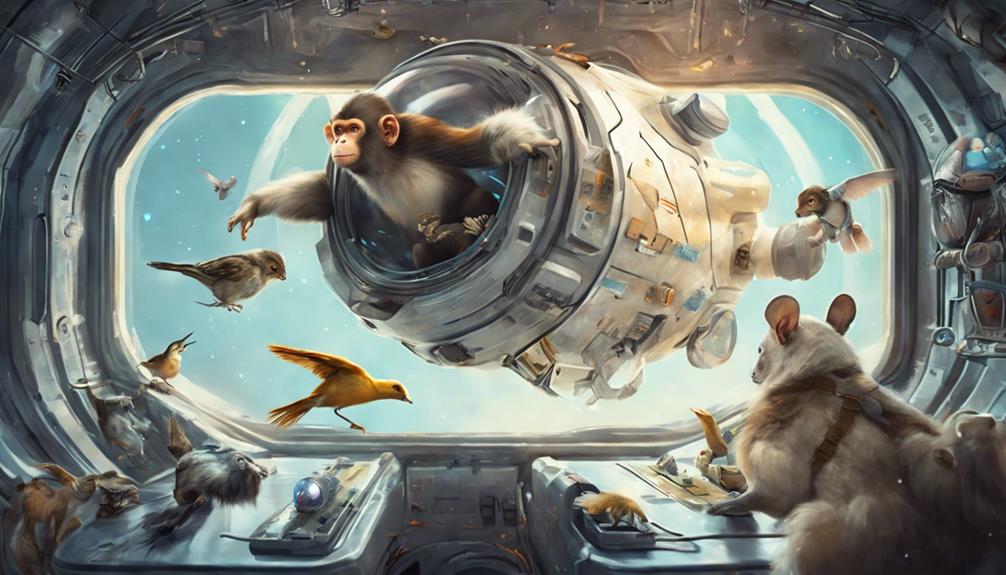Animals have been instrumental in shaping our understanding of space exploration, serving as pioneers in early missions and continuing to provide valuable data in more recent experiments. From the iconic flights of primates like Ham and Enos to the resilience of rodents and the unexpected travelers like frogs and tardigrades, a diverse range of creatures have ventured beyond Earth's atmosphere. These missions have not only expanded our scientific knowledge but have also sparked discussions on the ethical implications of sending living beings into the cosmos. The journey of animals in space is a testament to both the curiosity of humanity and the resilience of life beyond our planet's boundaries.
Key Takeaways
- Fruit flies, monkeys, dogs, and rodents like mice and rats have been pioneers in animal space missions.
- Rodent studies have significantly advanced the understanding of bone density loss, muscle wasting, and immune system changes in space.
- Animals like tardigrades, spiders, and fish have shown adaptability and survival in challenging space environments.
- Microscopic travelers like nematodes have provided insights into genetic expression and physiological changes in space.
Animals in Early Space Missions
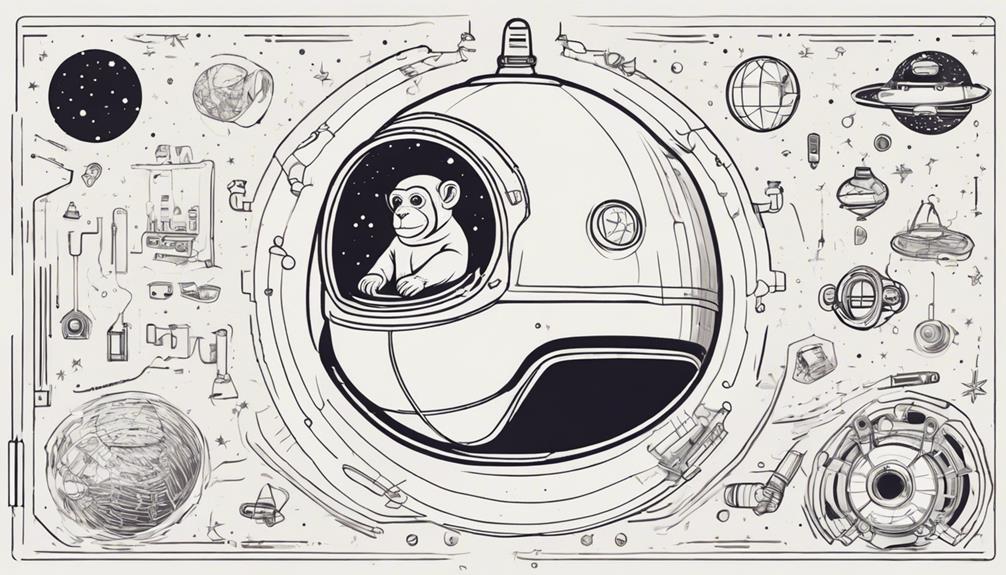
During the early space missions, animals played crucial roles in advancing scientific understanding and paving the way for human space exploration. Fruit flies were the pioneers in 1947, marking the first intentional animal space travelers for research purposes. Albert II, a brave rhesus monkey, followed suit in 1949, becoming the first mammal in space aboard a V-2 rocket. The Soviet space dogs, Tsygan and Dezik, were the trailblazers in reaching space in 1951 on a Soviet R-1 rocket, showcasing the feasibility of living beings enduring space travel.
Notably, Laika, a dog, made history in 1957 by orbiting Earth aboard Sputnik 2. Unfortunately, Gordo, a squirrel monkey, faced a tragic fate during splashdown in 1958 after a successful space journey. These early animal astronauts were instrumental in studying the effects of microgravity on living organisms, providing valuable insights crucial for human space exploration endeavors. Their contributions laid the foundation for future space missions involving animals and humans alike.
Monkeys and Apes in Space
Monkeys and apes have been integral to early space exploration efforts, contributing significantly to our understanding of the physiological impacts of space travel on primates. Notable primate astronauts like Albert II, Ham, and Enos played crucial roles in the 1940s and 1960s, advancing space research. Ham the chimpanzee's successful flight in 1961 demonstrated the feasibility of sending living beings into space and paved the way for human space missions. Enos, another chimpanzee, orbited the Earth in 1961 as part of NASA's space program, providing valuable insights into the effects of space travel on primates. Monkeys and apes were instrumental in studying physiological responses to space conditions, aiding scientists in preparing for human space missions. Their contributions have been pivotal in shaping our understanding of the challenges associated with space exploration, laying the groundwork for future advancements in this field.
Mice and Rats in Space
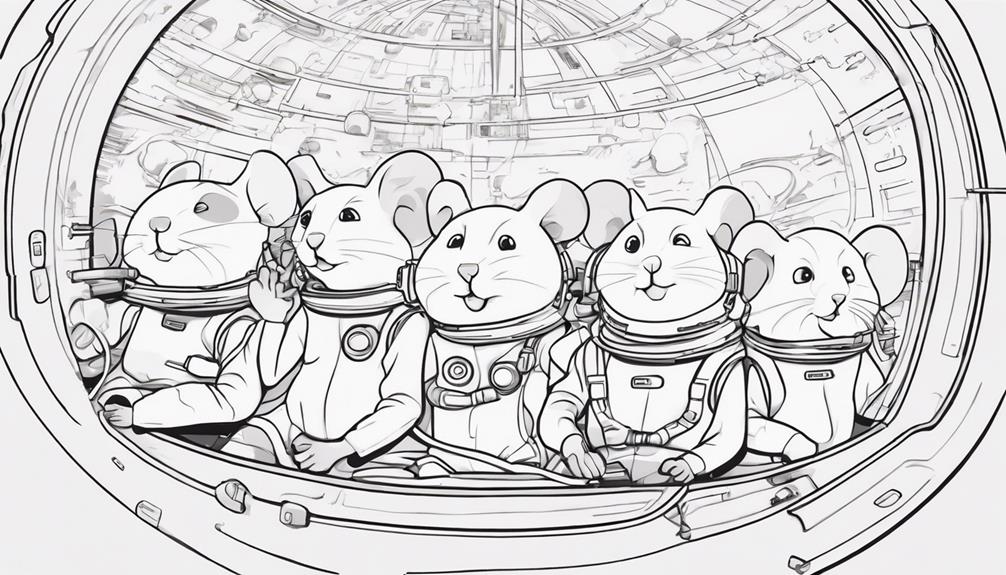
Mice and rats have been pivotal in advancing our understanding of the physiological impacts of space travel on mammals. Their participation in space missions has shed light on critical aspects such as bone density loss, muscle atrophy, cardiovascular changes, and immune system responses in microgravity environments. The data gathered from these rodent studies has been instrumental in shaping our knowledge of the challenges posed by long-duration space missions on biological systems.
Rodent Space Pioneers
Among the various animals that have ventured into space, rodents such as mice and rats have played a significant role as pioneers in exploring the effects of space travel on biological systems. Mice like Able and Miss Able were early space travelers in 1959, while rats such as Hector and Walter participated in missions like Bion 11 in 1996. These rodents have been essential in space research, with mice strains like C57BL/6 and BALB/c utilized to investigate bone density loss and immune system alterations. Rats like Orlan and Vyacheslav have contributed to understanding cardiovascular changes in microgravity. Due to their biological similarities to humans and adaptability to space conditions, rodents remain valuable subjects in space experiments, aiding in advancing our knowledge of space physiology.
Scientific Findings From Mice
Rodents, particularly mice and rats, have been indispensable in unraveling the physiological impacts of space travel on biological systems, offering crucial insights into areas such as bone density loss, muscle atrophy, immune system alterations, and cardiovascular changes. Studies on mice have provided valuable information on osteoporosis, muscle wasting, and cardiovascular health in astronauts exposed to microgravity. Additionally, mice have been instrumental in investigating the effects of space radiation on DNA damage and repair mechanisms. Rodent Research missions on the ISS have played a vital role in advancing our understanding of how space conditions affect mammals like mice and rats.
| Area Studied | Key Findings | Relevance |
|---|---|---|
| Bone Loss | Mice studies show accelerated bone density loss in space, mimicking conditions seen in osteoporosis patients. | Implications for astronaut health in space. |
| Muscle Atrophy | Research on mice reveals significant muscle wasting due to microgravity, aiding in countermeasure development. | Understanding muscle health in space. |
| Immune System Changes | Mice studies demonstrate immune system alterations in space, shedding light on potential health risks for astronauts. | Importance of immune function in space. |
| Cardiovascular Health | Investigations on mice indicate cardiovascular changes in space, informing strategies for maintaining heart health. | Understanding heart health in space. |
Dogs in Space Exploration
Dogs have played a crucial role in space exploration, notably with pioneers like Laika, Belka, and Strelka leading the way in early missions. Laika, the first animal to orbit Earth in 1957, paved the path for subsequent canine astronauts in space exploration. Soviet missions capitalized on dogs such as Chernushka and Zvyozdochka, leveraging their adaptability to confinement and ability to provide valuable physiological data during these early space missions. Belka and Strelka furthered the endeavors by becoming the first animals to safely return from space, marking a significant milestone in animal space exploration. The contributions of these canine astronauts, particularly Laika, have been instrumental in advancing research on the effects of space travel on living organisms. Through their participation in space missions, dogs have offered invaluable insights into the challenges and possibilities of extended space exploration, shaping the trajectory of human space endeavors.
Unlikely Space Travelers: Tortoises and Frogs
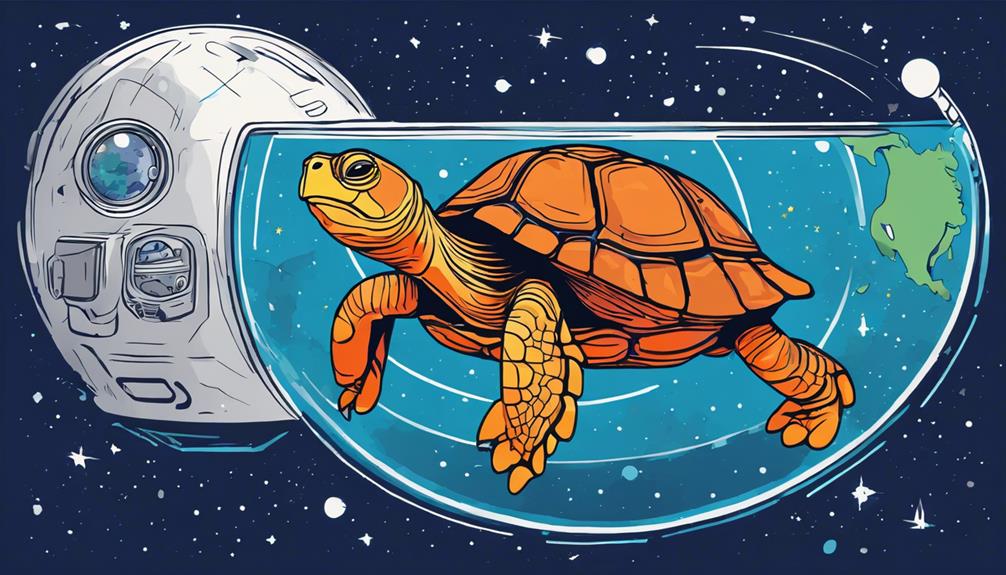
Tortoises and frogs, two unlikely space travelers, have significantly contributed to our understanding of the effects of space travel on living organisms through their participation in various space missions. In 1968, two Russian tortoises became the first animals to orbit the moon and return to Earth, marking a significant milestone in space exploration. Frogs were also integral to experiments in 1970 that focused on studying motion sickness in space, shedding light on how different species adapt to the challenges of space conditions. These missions provided valuable insights into the resilience and adaptability of tortoises and frogs when exposed to the rigors of space travel. The journeys of these animals highlighted the importance of studying the impact of space conditions on living organisms, paving the way for further research in understanding how different species cope with the demands of space exploration.
| Tortoises | Frogs |
|---|---|
| Orbit the Moon | Study Motion Sickness |
| Resilient to Space Conditions | Adaptability in Challenging Environments |
| Valuable Insights for Research | Contribution to Understanding Living Organisms |
| Demonstrated Adaptability | Highlighted Resilience |
Smaller Space Pioneers: Spiders, Fish, and Tardigrades
Spiders, fish, and tardigrades have all played important roles as smaller space pioneers, contributing to scientific research on the effects of microgravity and extreme conditions on different species. From studying the behavior of spiders spinning webs in Skylab experiments to observing the resilience of tardigrades surviving outer space conditions, these tiny creatures have expanded our understanding of how various life forms adapt to space environments. By including a diverse range of animals in space experiments, researchers can gather valuable insights into the challenges and possibilities of space travel for different species.
Tiny Space Explorers
The diminutive pioneers of space exploration, comprising spiders, fish, and tardigrades, have significantly advanced our understanding of biological responses to microgravity environments. Spiders like Arabella and Anita were integral to space missions aimed at studying web spinning behavior in microgravity. South American guppies, the first fish in space, provided valuable insights into aquatic life's adaptations in space conditions. Tardigrades, also known as water bears, showcased remarkable survival capabilities in extreme space environments. Research on these tiny space explorers has played a crucial role in scientific studies focusing on biological functions under the influence of microgravity. Their contributions have been instrumental in expanding our knowledge of the effects of space travel on various organisms.
Unlikely Space Travelers
Among the myriad creatures sent to space for scientific exploration, spiders, fish, and tardigrades have emerged as unique and invaluable contributors to our understanding of biological responses in microgravity environments. Spiders like Arabella and Anita were the first to spin webs in space, providing insights into their behavior under such conditions. In 1976, South American guppies became the first fish to journey to space for research purposes, shedding light on fish adaptation in microgravity. Tardigrades, known for their resilience, exhibited survival in extreme space conditions, prompting further studies on their adaptability. Research on spiders, fish, and tardigrades in space continues to reveal the effects of microgravity on these organisms, offering valuable information for future space exploration endeavors.
Nematodes and Other Microscopic Travelers
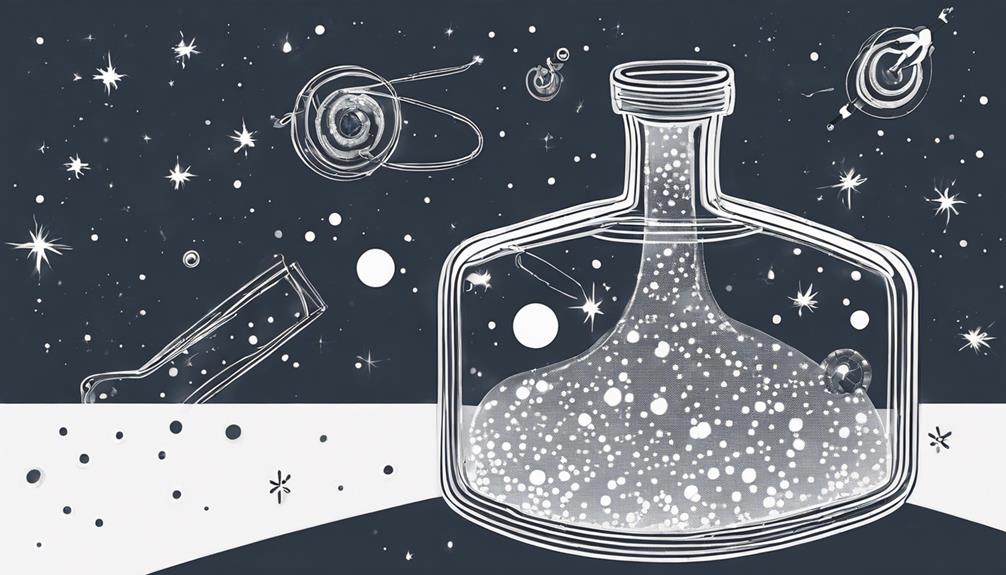
Numerous microscopic travelers, including nematodes such as C. elegans, have been pivotal in space research exploring genetic expression and muscle degradation. These roundworms have been instrumental in studying the impact of microgravity on muscle atrophy and immune responses, providing valuable insights into how physiological changes occur in space environments. C. elegans, specifically, has been a prominent model organism for investigating genetic alterations under space conditions. Experiments involving nematodes on the International Space Station (ISS) have shed light on the effects of space travel on muscle tissue and genetic responses. By studying nematodes in space, scientists have gained a better understanding of muscle degradation and genetic expression in microgravity, contributing to broader research on the physiological consequences of extended space travel. Overall, nematodes have proven to be indispensable in unraveling the complexities of how living organisms adapt to and are affected by the space environment.
Animals on the International Space Station
Pivotal to space research for their contributions in understanding genetic expression and muscle degradation, various animals such as mice, fruit flies, fish, and rabbits have been extensively studied on the International Space Station to investigate the effects of microgravity on biological functions.
- DNA changes: Male mice spent 30 days on the ISS in 2016 to observe alterations in their DNA, providing insights into genetic responses to space conditions.
- Mouse babies: In 2017, a groundbreaking experiment on the ISS resulted in healthy mouse babies being born from sperm that had been exposed to space for nearly 300 days, shedding light on reproduction in space environments.
- Bobtail squid: Recently, in 2021, bobtail squid were sent to the ISS to study how their microbiome adapts to the unique conditions of space, offering valuable information on the interaction between host organisms and their microorganisms in microgravity.
These studies exemplify the diverse range of animals utilized on the ISS to advance our understanding of the biological effects of space travel.
Frequently Asked Questions
What Animals Have Been Sent to Space?
Various animals have been crucial in space exploration, serving as pioneers in understanding the effects of space travel on living organisms. Space monkeys, microgravity rats, cosmic turtles, zero gravity frogs, interstellar fish, astronaut cats, celestial hamsters, galactic guinea pigs, orbital parrots, and astro mice have all contributed to scientific research in space. Their participation has provided valuable insights into the challenges and possibilities of human space exploration.
Is Laika the Dog Still in Space?
Laika the dog, a key figure in the Soviet space program during the Space Race era, remains a significant symbol of animal rights, ethical concerns, and scientific advancements in space exploration. Despite her pioneering journey in the early days of space travel, Laika's legacy is not one of current presence in space. Her sacrifice sparked important conversations about animal welfare and paved the way for future advancements in the field of space exploration from a historical perspective.
Has Any Animal Been Exposed to Space?
Exposure to space remains a crucial aspect of scientific research, particularly concerning the effects on living organisms. Animal astronauts have played pivotal roles in cosmic voyages, aiding in our understanding of zero gravity, astral explorers' responses to space conditions, and the outcomes of celestial experiments. Through extraterrestrial tests on various species, including monkeys, newts, and fruit flies, researchers continue to gather invaluable data for cosmic research and the advancements in space exploration.
What Was the Last Animal to Go to Space?
The most recent animal to venture into space was a bobtail squid in 2021, part of a research study on microbiome adaptation aboard the International Space Station (ISS). This mission marks a significant step in advancing our understanding of how organisms adapt to space environments. Future prospects for animal research in space offer exciting opportunities for scientific discoveries, though ethical considerations regarding animal welfare, research outcomes, and public perception must be carefully addressed.
Conclusion
In conclusion, the diverse array of animals that have journeyed into space has provided invaluable insights into the effects of space travel on living organisms. From fruit flies to tardigrades, these space pioneers have contributed to our understanding of the challenges and opportunities of exploring beyond Earth. Their resilience and adaptability serve as a testament to the potential for life to thrive in the harsh conditions of space, sparking scientific curiosity and exploration.
